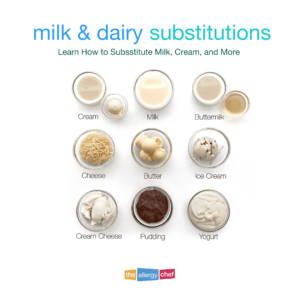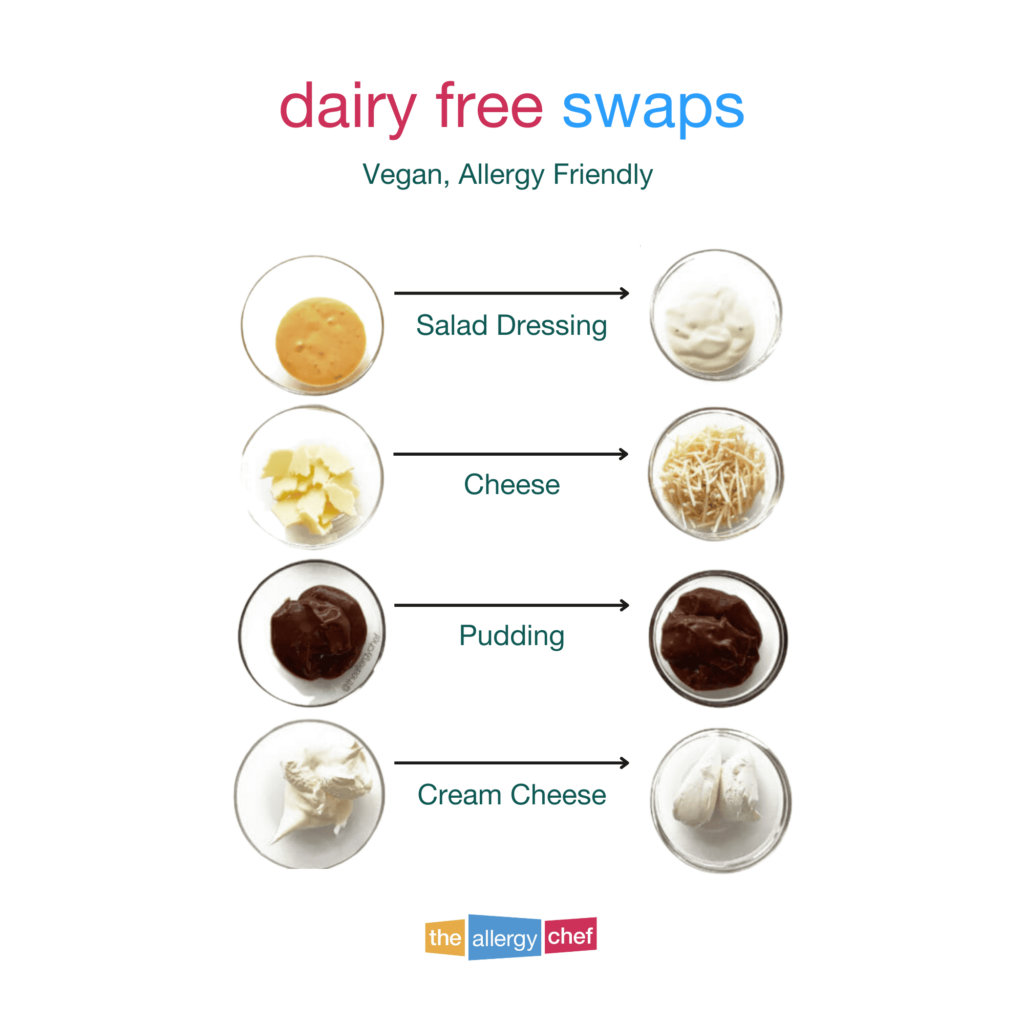If you’re new to being dairy free, welcome! Any type of dietary restriction can feel impossible at times, especially when you’re new. The good news is, there are loads of resources to help you on your journey. This article will detail different dairy free Substitutions, and how to use them. Additionally, these resources are very helpful:
- Dairy Free Diet: Things to Know When You’re New to Dairy Free
- Dairy Free Swaps & Substitutes (consumer goods)
- Hidden Sources of Dairy
First, The Bell Curve
Think of a Bell Curve. A person’s sensitivity to dairy (and other allergens) lies on the curve. To the left, we have people that need to avoid ingesting the food. To the right, we have people with contact allergies, airborne allergies, those who can’t consume food made on shared equipment with dairy, etc.
What I’ve found over the years, about 30% of people with a dairy allergy self-report that they can not consume products made on shared equipment with dairy (more about this in the Dairy Free Swaps article). It’s important to know where you are on the curve, as it will determine which brand of dairy free products will be safe for you.
Dairy Free Milk
The great news is, in most cases, dairy free milk is a 1:1 substitution for cow’s milk in recipes (both cooking and baking). Here in the US, there’s a HUGE variety of plant-based milks to choose from. Something you’ll hear me say a lot: no two people are the same. Here’s why that’s important…
A lot dairy free milk is made on shared equipment with milk (with proper cleaning in between products, but no system is perfect, hence recalls). The only way for a company to truly say it’s dairy free is to have zero dairy in the facility.
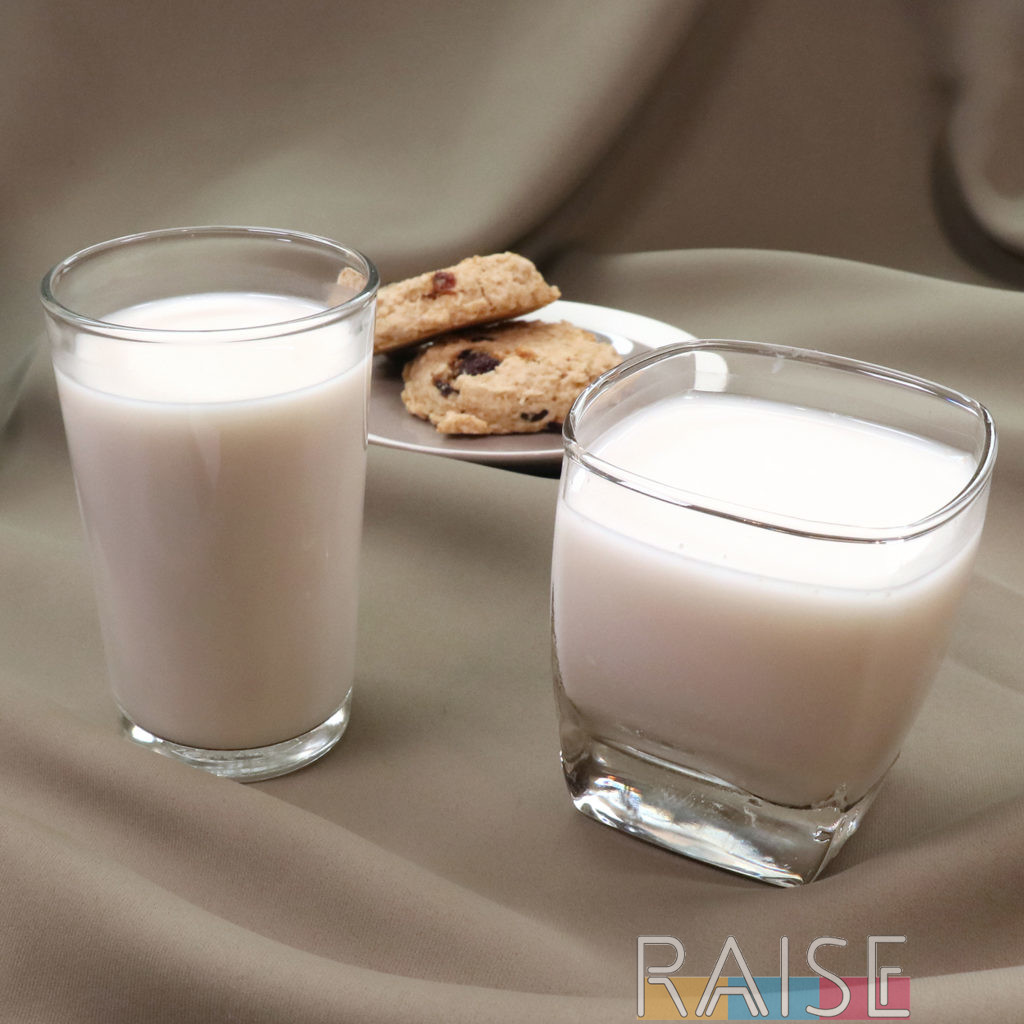 Related: How to Make Top 9 Free Milk at Home
Related: How to Make Top 9 Free Milk at Home
The brand I vouch for: Homemade Milk. Yup, I make all of our milk at home with the NutraMilk. There’s so much peace of mind when making our milk at home. Given that dairy isn’t the only allergen we avoid in our home, and the issue of shared equipment, this is the safest option for us. Additionally, I ran the numbers recently and we’re saving a LOT of money on dairy free milk.
As you determine where you are on the bell curve, and call companies, you’ll be able to find a brand that works for your individual needs. Once you determine which brands are suitable, and I can’t stress this enough, buy one of everything. Sample it ALL and figure out which product(s) you like best. We’ve sampled dairy free milk and you can see the reviews here.
When Dairy Free Milk Is Not a 1:1 Substitution
When a recipe says 1 cup of milk, that’s a simple 1:1 substitution with any pant-based milk you choose. If the recipe calls for low fat milk, whole milk, cream, heavy cream, or buttermilk, these are not 1:1 substitutions. Technically, in a pinch, plant-based milk will work, however, your results may be far from what the author intended.
Plant-based milks come from many plants including: rice, soy, oat, peanut, almond, flax, walnut, sesame, and coconut. Each one of these will have a different fat and protein ratio, meaning some are better for a particular task.
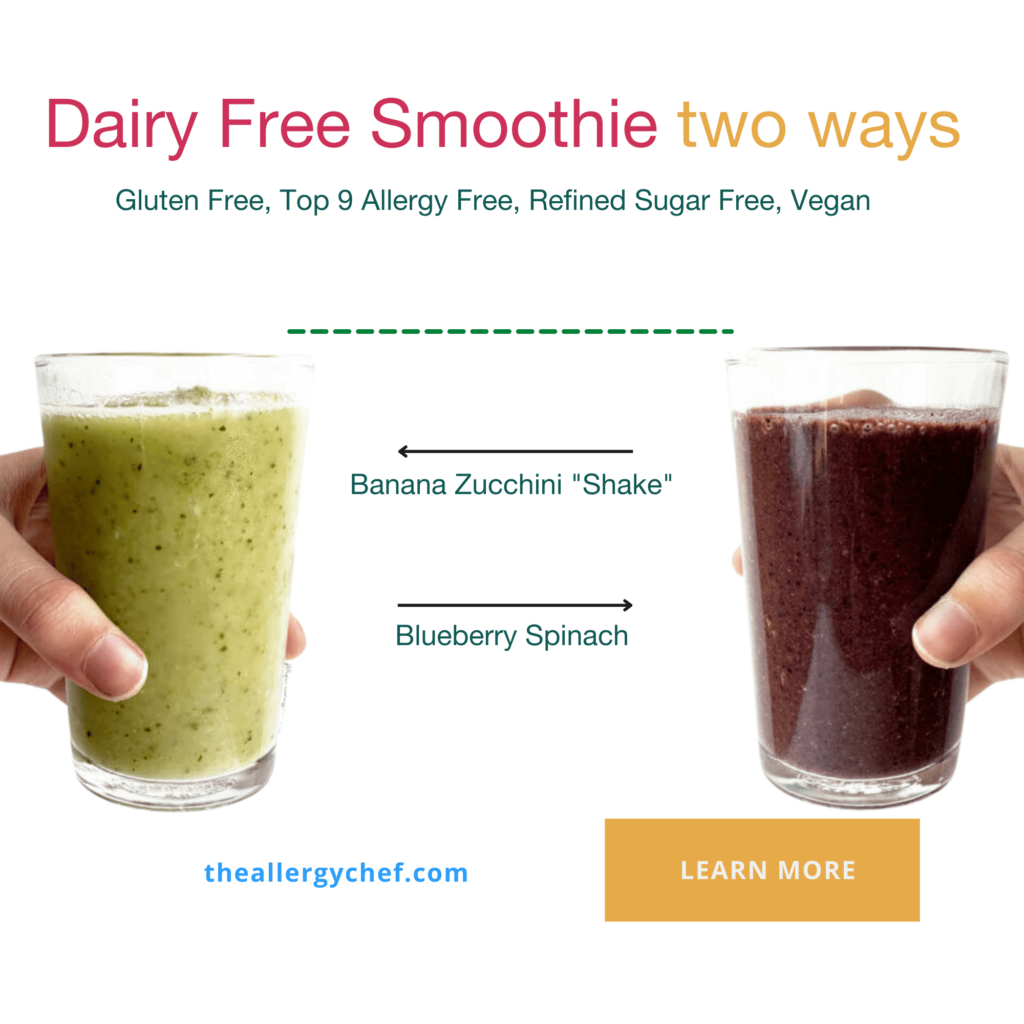 Related: 2 Dairy Free Smoothie Recipes
Related: 2 Dairy Free Smoothie Recipes
Take soy milk for example. It behaves better in some baking projects due to the protein content AND how the protein behaves. Oat milk as another example, can be made/manufactured in several different ways, and each will produce a different result. Coconut milk can be purchased as “full fat” or not, and this makes a HUGE difference in the end.
How to Make Dairy Free Cream and Heavy Cream
It may sound strange, but I personally find this to be fun. If a recipe calls for cream or heavy cream, first, you need to know the fat percentages.
- Cream at a minimum is 18% fat.
- Whipping Cream is 30% fat.
- Heavy Whipping Cream is 36% fat or more.
I won’t bog down this article with the science of milk fat, but just know, it’s very interesting. Should you ever want to create delicate pastry, be sure to read up on this topic first 🙂
To replace these, we need dairy free milk + fat. Let’s say a recipe calls for 100mL of whipping cream. This means we have 70mL of milk and 30mL of fat. I like to use homemade milk in conjunction with shortening as a replacement for cream. I do this because shortening is essentially pure fat, unlike dairy free butter.
Depending on the recipe you use, you may need to use an immersion blender to combine the two ingredients. Now, this is where we start to veer on to the path of complicated recipes, so I’ll just quietly back track.
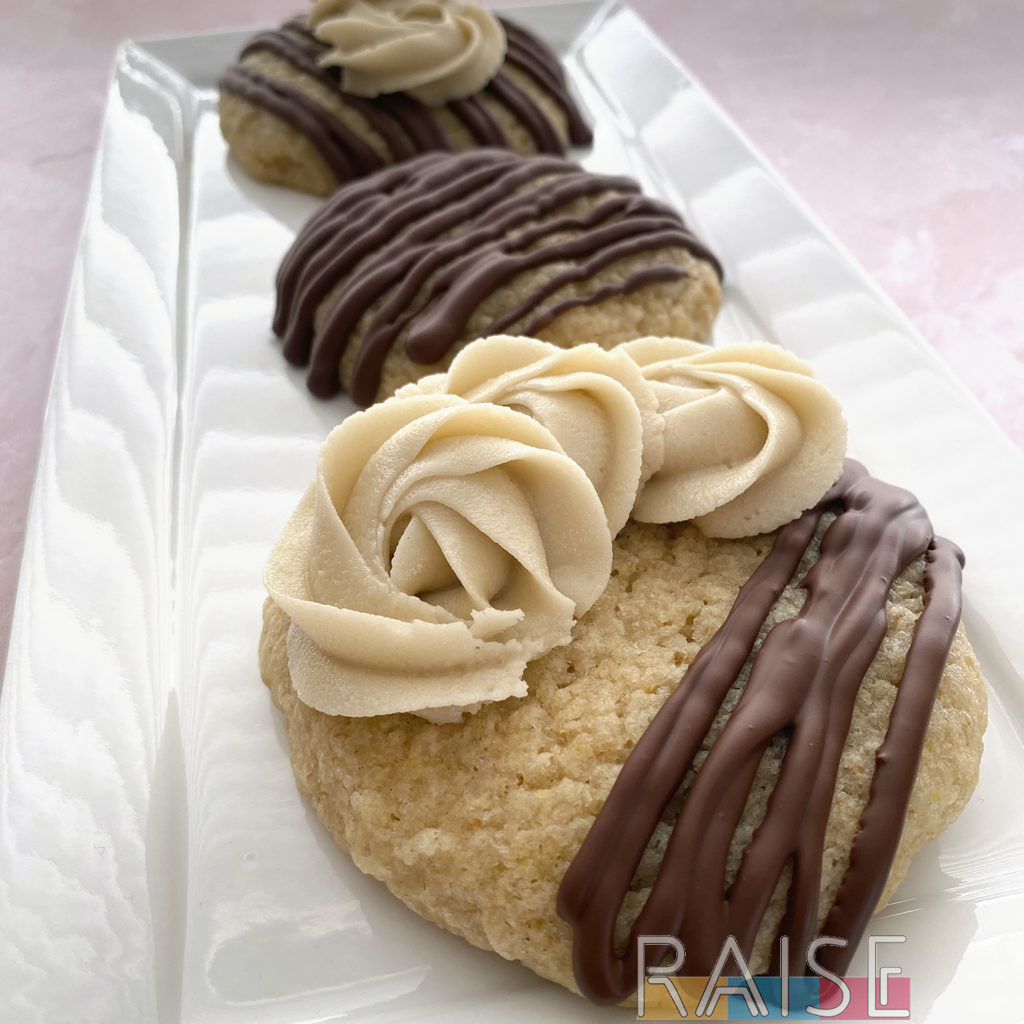 GF, V, Top 9 Free Fluffy Rose Cookie Recipe
GF, V, Top 9 Free Fluffy Rose Cookie Recipe
Most likely you’ll encounter cream in some kind of curry or muffin recipe. In both instances, you can use dairy free milk + butter as a substitute. You may need to melt the butter in advance, especially for a muffin.
This substitution however does not work well for whip cream, as in, the kind that comes in a canister. For that, you’ll need expensive tools and stabilizing ingredients.
Making cream, heavy cream, and heavy whipping cream will all be the same process. Take the amount of the ingredient called for, and mathematically calculate the fat percentage. It’s a million times easier if you’re using a recipe that measures in mL/g rather than cups.
Finally, remember that cream is a minimum of 18% fat, where whipping cream IS 30%, and heavy cream is a 36% or MORE. In other words, there’s wiggle room with cream and heavy cream. How you change the percentages will impact the final flavor, texture, and mouthfeel of your recipe.
How to Make Dairy Free Buttermilk
Making buttermilk is a thousand times easier than cream. No calculations needed. A basic ratio is 1 cup to 1 Tablespoon. 1 cup of dairy free milk combined with 1 Tablespoon of white vinegar will yield the best results. For even better results, use almond, cashew, or coconut milk if you’re able.
So… what about the rest of us? If you’re allergic to corn and can’t have white vinegar, apple cider vinegar will be your alternative. If you can’t have that, then lemon juice is the next best thing.
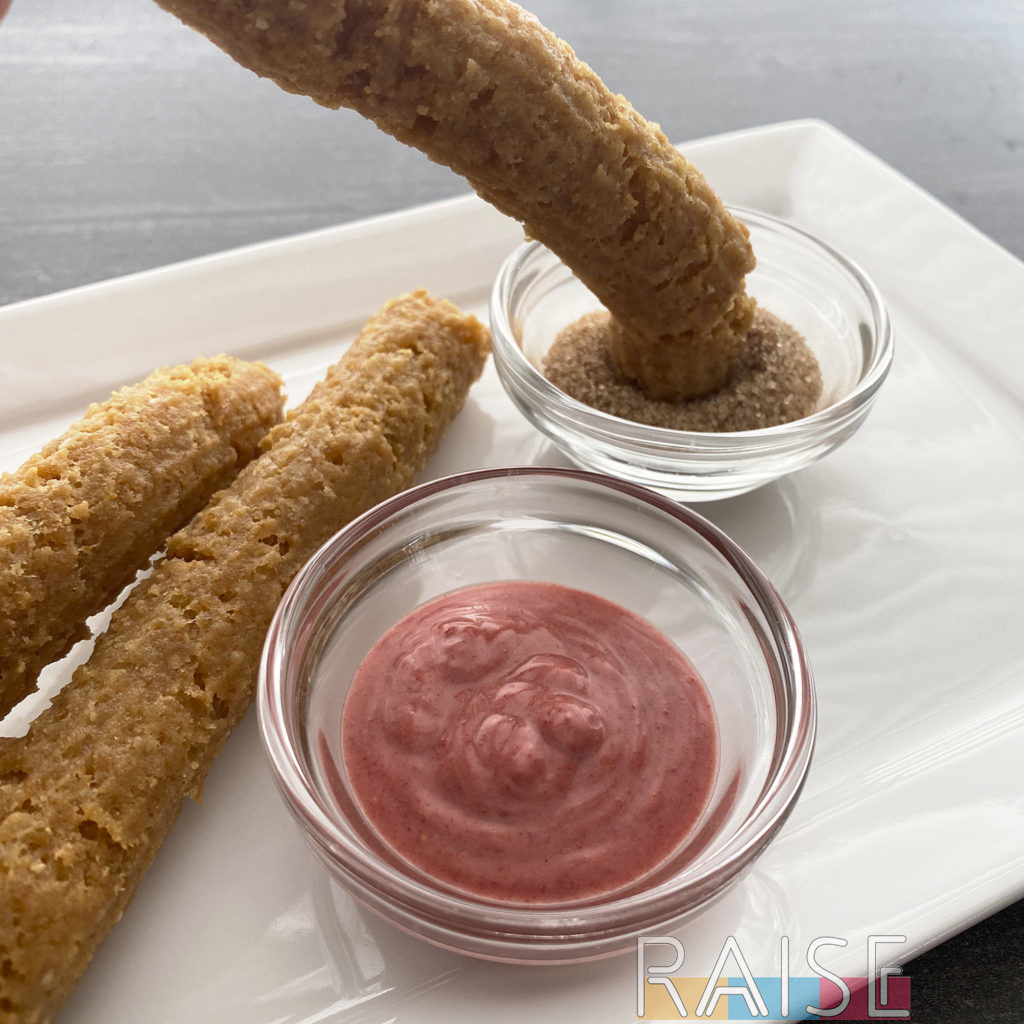 Vegan, GF, Top 9 Free Churro Recipe
Vegan, GF, Top 9 Free Churro Recipe
For those who can’t have almond, cashew, or coconut milk, then you’ll have to use the milk that’s safe for you. The higher the fat content, the better your results.
Here’s what I can tell you: I use a basic “buttermilk” that’s far from ideal and it works pretty well in free-from recipes (homemade oat milk + apple cider vinegar). You won’t get the same tang and texture, but it’s enough to know that something different than plain milk was used.
How To Use Dairy Free Cheese
Do you know, I could give a TED Talk about dairy free cheese? It comes in all sorts of flavors and shapes. Yet, some tastes awful, and some have promises of melting on the package and it just doesn’t cooperate.
First, you’ll need to select a dairy free cheese that’s safe for you. Remember the bell curve from earlier? That still applies. Most dairy free cheese is made on shared equipment with dairy. About 70% of you will be fine with that. For the other 30% I recommend Follow Your Heart (shreds ONLY), Oatzarella (top 9 free), and Miyokos (contains cashew and/or coconut).
First, let’s talk taste. If you’ve had dairy your whole life then make the switch tomorrow, please avoid dairy free cheese. I suggest 6 months to 1 year. You need time to forget. If you can have tree nuts, select a brand that has cashew in the ingredients. This will give you an intense creamy texture and mouthfeel, which is part of an authentic cheese eating experience.
Next, manage your expectations. Nothing will be the same, and your flavors are very limited. Also, don’t eat the cheese standalone. Eat it mixed with something. This really only applies if you were diagnosed with a point of reference. For those born allergic to dairy, they only know dairy free cheese and seem to do just fine.
Now, let’s talk about melting. Most dairy free cheese does NOT melt the same way milk-based cheese does. Here are a couple of tips.
Place your cheese in a non-stick pan on medium heat. watch it carefully as it will start to melt. You’ll need to mix it a bit to promote even melting. Once it’s the consistency you’d like, slide it out of the pan on to the cheese vessel you’ve selected. I find this works very well for tortillas, nachos, grilled cheese, etc.
If you’re making a sauce, start in your blender. When you put some brands in a pot with milk (think mac-n-cheese) the cheese clumps and gets weird. It doesn’t properly melt and combine to form a smooth sauce. The solution that isn’t talked about enough: your blender.
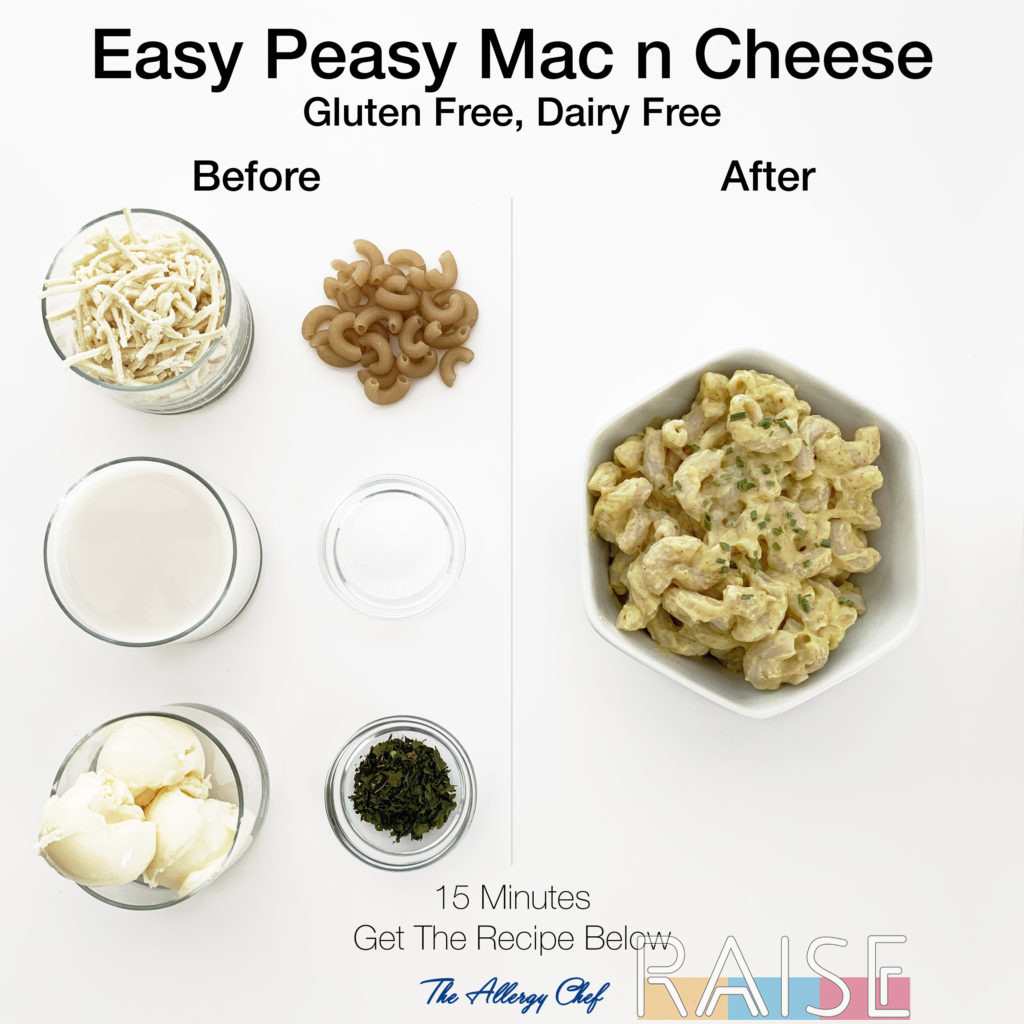 Related: Easy Mac with Blender Sauce
Related: Easy Mac with Blender Sauce
Place all the ingredients (dairy free milk included) into your blender and blend on high. Then, transfer the sauce to the stove for heating. One brand that does well with stovetop sauce heating is Follow Your Heart (Parmesan shreds). I’ve successfully melted their cheese in dairy free milk sauces on the stove top.
If you use the blender method, you can use shreds, blocks (cut into smaller pieces) and even slices.
Your oven’s broiler is also a great way to melt dairy free cheese. Just be sure to keep a close eye on it to prevent burning. Whilst a handheld culinary torch also works, it’s not the most efficient method.
Selecting a Good Dairy Free Butter
Here’s more great news for you: They all essentially behave the same. The only time you’ll truly notice a difference: when butter is the star of the show. Think, buttercream frosting and butter on your toast. This is when taste and texture will really come through. I use a special butter that’s made for commercial purposes thanks to the bakery. It’s dairy free, and top 9 allergy free as well.
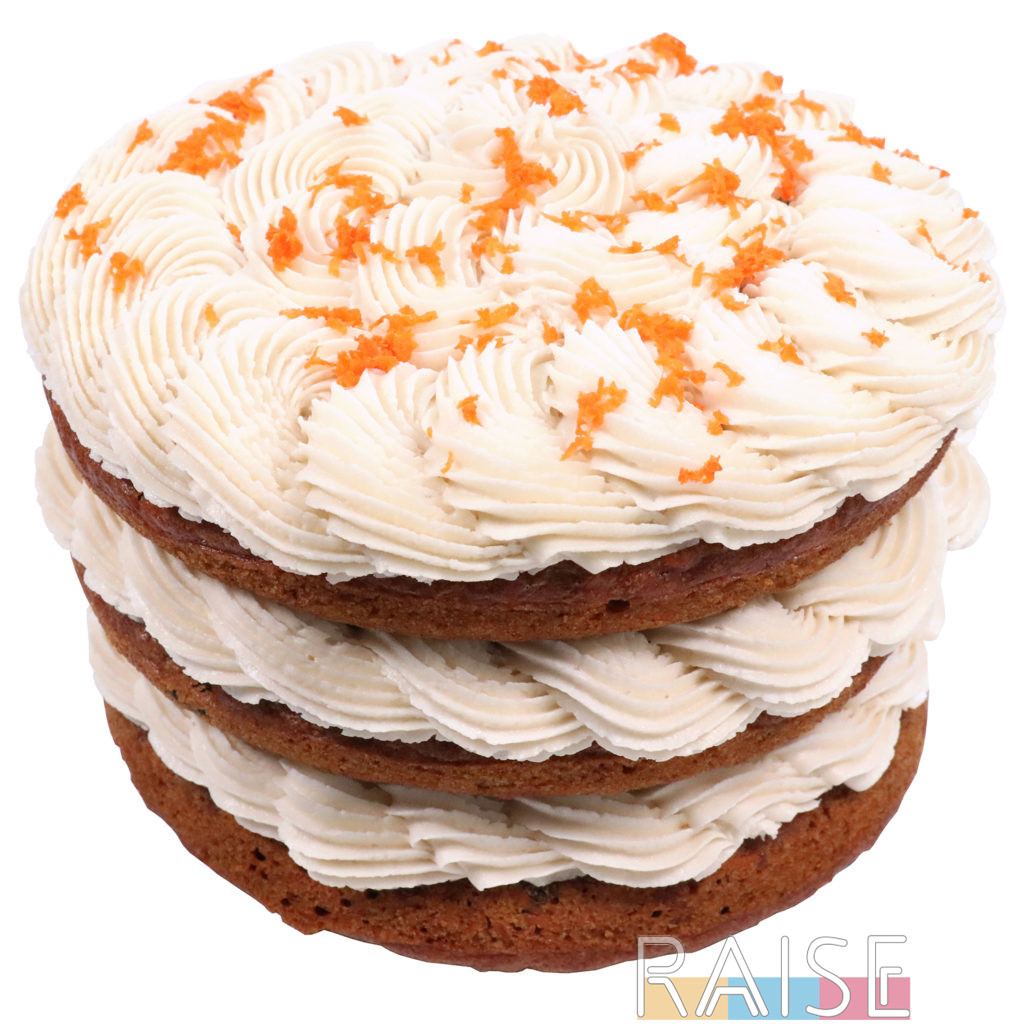 Related: How to Make Vanilla Frosting
Related: How to Make Vanilla Frosting
Most commercial options in stores will contain one or more major allergen, and each will have a unique taste. Purchase dairy free butters that are safe for you and sample them so you know which you prefer. Cost is also a factor here that can’t be ignored.
If you find that you like the taste of an expensive dairy free butter, use it for toast, or when it really counts. Then find something a little less expensive for everyday use, for baking, and cooking.
We All Scream For Ice Cream
This is such a personal and touchy subject. How you experience ice cream is unique to you. Here are the main things to remember about dairy free frozen desserts (did you know that technically it isn’t ice cream because there’s no cream?)
At the time of originally publishing, Nana Creme is the only top 8 free option made on dedicated equipment that also ships nationwide in the US.
Shared equipment with milk: If this is an issue, you’ll have limited choices. Cado is a good option.
Gums and other ingredients: If you’re not comfortable eating those, then your options will be limited
Creaminess: The higher the fat content, the more creamy your ice cream will be, especially if there aren’t any gums and other “sciency” ingredients
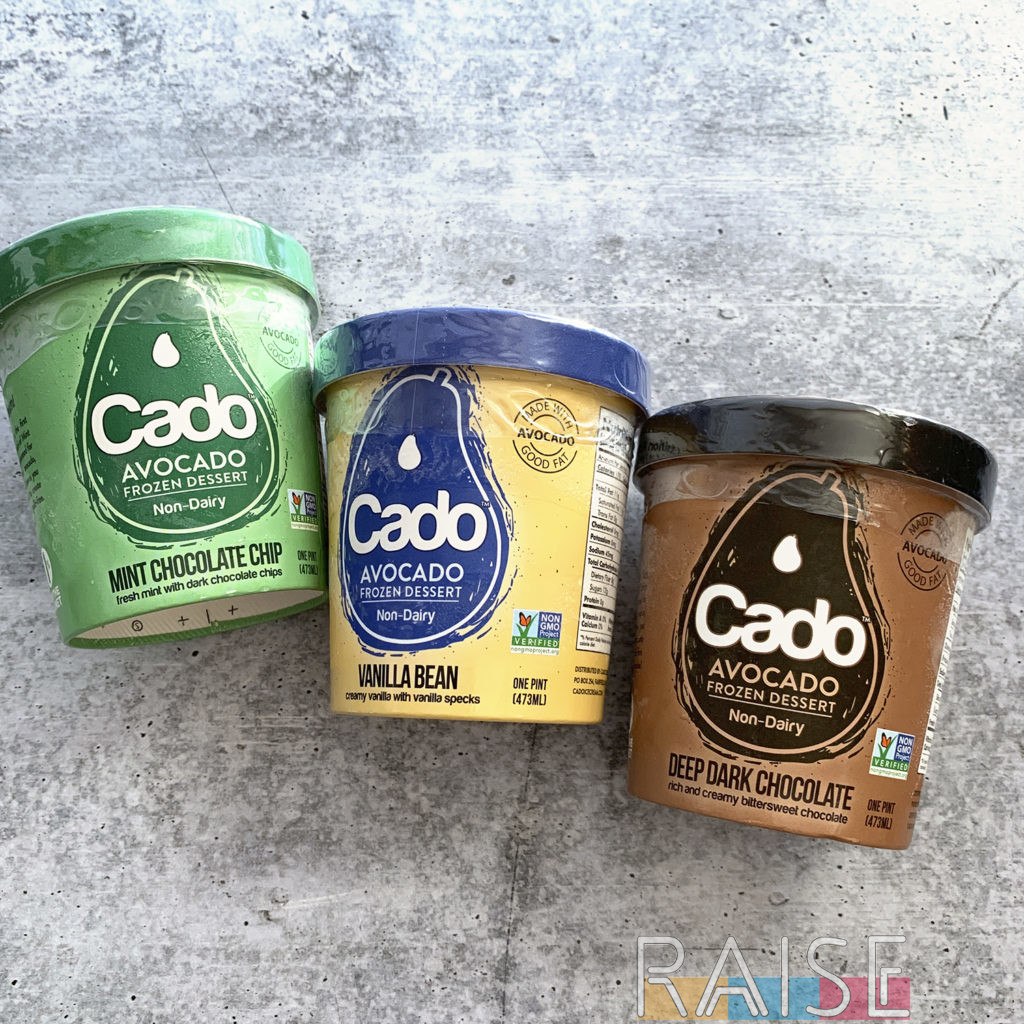 Related: Cado Ice Cream Review
Related: Cado Ice Cream Review
Let the ice cream melt a little before eating it. This is also true of milk-based ice cream. Allow the ice cream sit at room temp for several minutes before consuming. It will be less hard and dense.
If all else fails, purchase an ice cream maker. I have 2, both with a compressor built in. This is by far a much better machine than those that require bowl freezing. Having your own machine gives you SO MUCH creative control. In the end, you’ll end up with recipes you love, and you’ll probably save a little money as well.
Cream Cheese, Sour Cream, and Pudding
This brings us to the last three dairy free substitutions. Commercially, there aren’t many brands/options available nationwide. Here’s what I can tell you about the brands I have access to: they behave as expected, and are a 1:1 exchange when used in recipes.
However, I’ll add this: when I develop recipes, I avoid these products, as I know many of our users and readers can’t have them. I reinvent the wheel a bit by calling for more basic ingredients and building from the ground up.
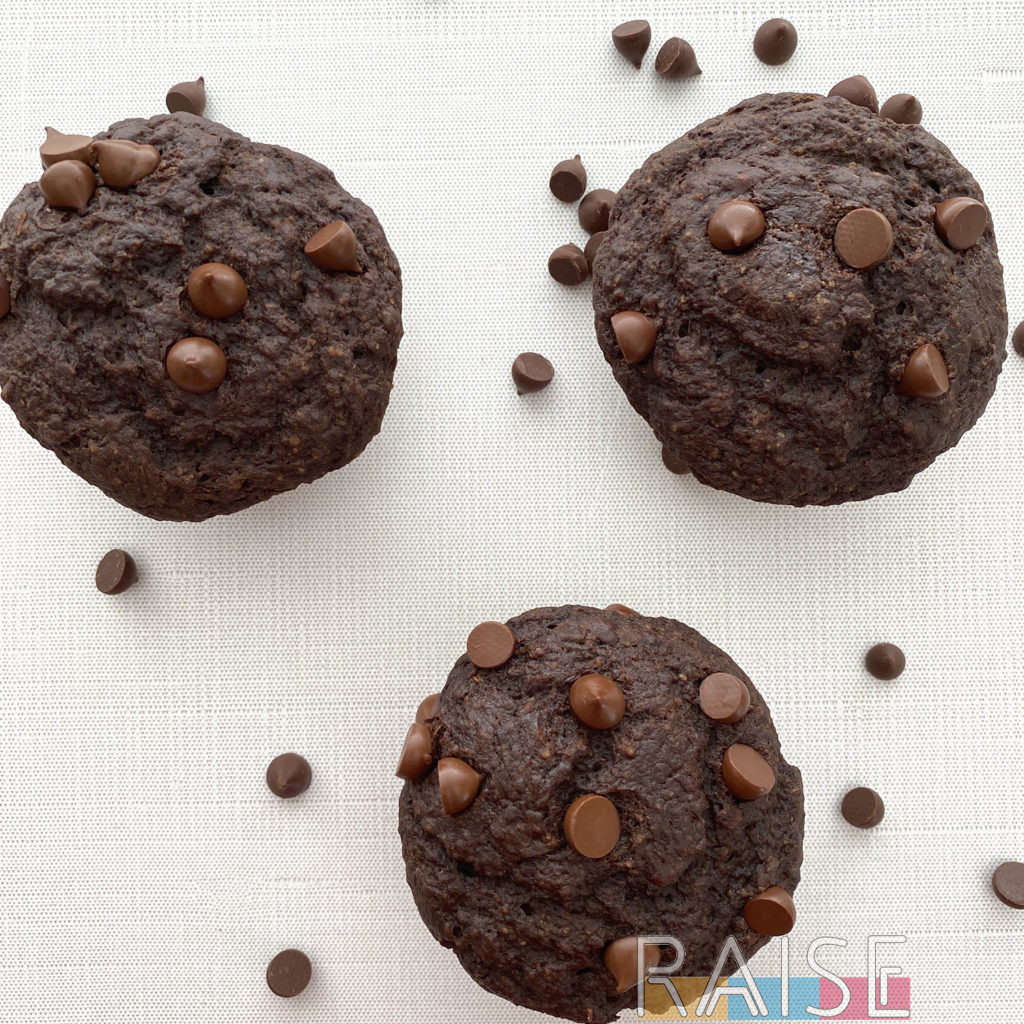 Dairy Free Double Chocolate Muffin Recipe
Dairy Free Double Chocolate Muffin Recipe
Where pudding is concerned, if you can’t have store bought, ingredients such as cashew, banana, and avocado will all add a great mouthfeel to your pudding. If you rely heavily on gums, you’ll have something a bit more goopy than pudding. This does NOT mean it isn’t delicious. It means you’ll need to manage your expectations and remind yourself that you’re creating new food memories.
Hopefully this article has given you a better understanding of dairy free substitutions and when to use them. Be sure to read over the related articles (linked at the start of the article), as they’ll provide more context for you. If you’re looking for dairy free recipes, the RAISE website is 100% dairy (and gluten/wheat) free. In fact, check out the Advanced Recipe Search and plug in your unique needs.

